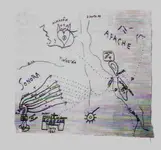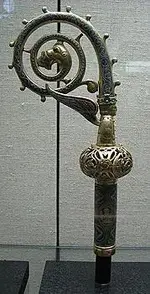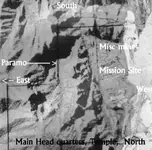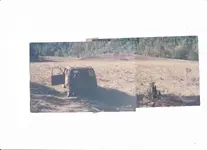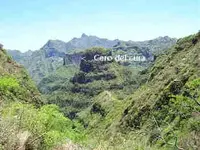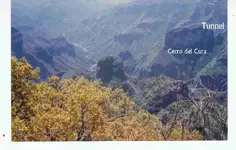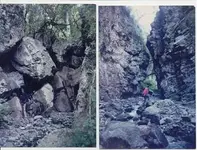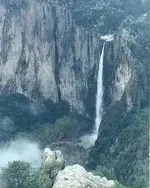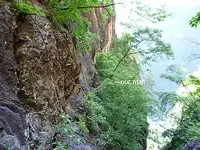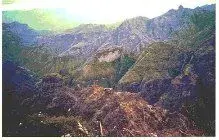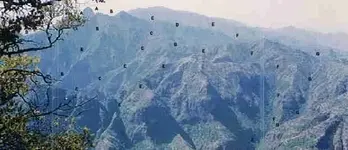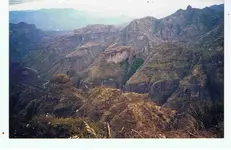Per the Google Earth Pro path measuring tool, the land route/river routes to the mouth of the Rio Grande from the alleged general location of the Tayopa mine (I chose Yecora MX as a starting point). I inflated all distances by 25% to account for all the twists and turns encountered on land. I used the published length of the Rio Grande border measurement.
Option 1, easterly route. Yecora to La Junta MX (rough mountains 150 miles), then to Chihuahua MX (moderate hilly 125 miles), then to Ojinaga MX (mild desert terrain 150 miles), then by barge to the Gulf of Mexico (950 miles). 425 land miles, 950 river miles.
Option 2, northerly route. Yecora to Moctezuma MX (rough mountains 150 miles), then to Agua Prieta MX (moderate hilly 150 miles), then to El Paso TX or Mesilla NM (mild desert terrain 250 miles), then by barge to the Gulf of Mexico (1,250 miles). 550 land miles, 1,250 river miles.
Option 3, westerly route. Yecora to Tecoripa MX (rough mountains 100 miles), then to the Sea of Cortez (mild desert terrain 175 miles), then by ship to Panama (2,500 miles), then across Panama (60 miles to Gulf of Mexico). 325 land miles, 2,500 sea miles.
Option 1: Why cross Chihuahua and the Camino Real, controlled by Franciscans and Spanish? Unlikely.
Option 2: Why journey into New Mexico in the first place - no supplies available, a Franciscan stronghold, the Rio Grande controlled by the Spanish, and all of it teeming with Apaches, who were at war with all of them? In addition, why add 100 miles of land and 100 miles of river travel by continuing north to the Caballo Range? Unlikely.
Option 3: Less land travel. Sea travel is quicker and easier than river barging. More likely.
It's not impossible, but it's hard to accept that the Jesuits would move precious metal to the Caballos from Mexico. There well may be caches in the Caballos, but it seems unlikely they came from Mexico. As always, I could be wrong, but all I see that supports the idea is that suspicious map and some wishful thinking.





